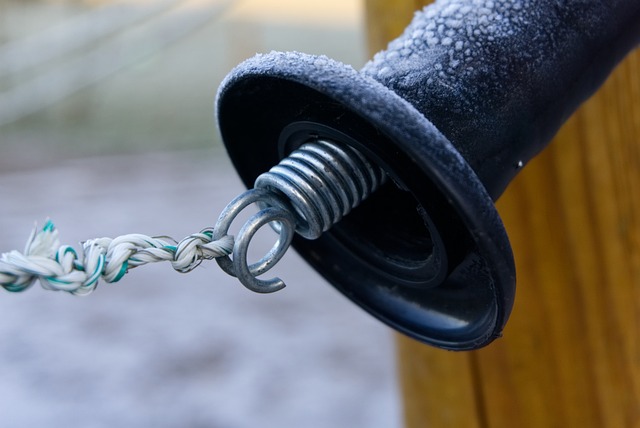Fence Staining and Sealing: A Comprehensive Guide to Revitalizing Your Wooden Fences
A well-stained and sealed wooden fence not only enhances the aesthetic appeal of your outdoor space but also extends its lifespan. This comprehensive guide delves into the intricacies of fence staining and sealing, equipping you with the knowledge to transform your fence from ordinary to extraordinary. From understanding the benefits and exploring various stain types to preparing your fence and choosing the perfect color, we’ll walk you through every step, ensuring a durable and beautiful finish.
- Understanding Fence Staining: Benefits and Types
- Preparing Your Wooden Fence for Staining
- Choosing the Right Stain: Color and Formula
- Applying the Stain: Step-by-Step Guide
- Sealing for Protection: The Final Touch
Understanding Fence Staining: Benefits and Types
Fence staining is not just about enhancing aesthetics; it offers several practical benefits for wooden fences. The primary purpose of staining is to protect wood from environmental elements, including UV rays, moisture, and extreme temperatures. By blocking or absorbing these elements, stains help prolong the lifespan of your fence, preventing premature rotting, cracking, and warping. Over time, wood naturally darkens and becomes rougher, making it more susceptible to damage; a good coat of stain can restore and maintain its original beauty.
There are various types of fence staining solutions available, each with unique characteristics. Water-based stains are popular for their low odor, quick drying time, and easy cleanup. They offer moderate protection and come in a wide range of colors. Semi-transparent stains allow more light to penetrate, providing better wood protection while still showing some of the natural grain. On the other end of the spectrum, solid color stains completely cover the wood, offering superior concealment but less breathability. Choose your stain type based on desired appearance and level of protection needed for your wooden fence.
Preparing Your Wooden Fence for Staining
Preparing your wooden fence for staining is a crucial step to ensure the best results and prolong the life of your fence. Begin by thoroughly cleaning the fence to remove any dirt, dust, or debris that may be present. Use a pressure washer or a stiff brush and warm water solution to achieve a clean surface. This initial cleaning will help the stain adhere better and create a more even finish.
Once cleaned, inspect the fence for any signs of rot, cracks, or damaged boards. Repair these issues before staining to prevent further problems. Fill in any gaps with suitable wood putty and allow it to dry completely. Sanding the fence gently can also help smooth out any rough patches, ensuring a more professional appearance once stained.
Choosing the Right Stain: Color and Formula
Choosing the right stain is a crucial step in fence staining and sealing. Consider the desired color as your first point of reference. Dark colors like black or deep browns can add depth and richness, while lighter hues like redwood or natural finishes let the wood grain shine through. The formula or type of stain is equally important. Water-based stains are easy to apply and clean up, ideal for those new to staining. Oil-based stains penetrate deeper into the wood, offering better protection against moisture and UV rays but requiring more effort for cleaning.
The color options within each category—from subtle tones to bold shades—are vast, allowing you to match your fence’s aesthetic to your personal style. Read the product descriptions carefully; some stains have unique formulas designed for specific types of wood or climates. Picking a stain that aligns with your fence’s material and local environmental conditions ensures optimal performance and longevity.
Applying the Stain: Step-by-Step Guide
Applying the stain is a crucial step in enhancing your wooden fence’s appearance and protection. Start by ensuring your fence is clean and dry, free from any debris or dust. This preparation is essential as it allows the stain to adhere properly. Next, mix the stain according to the manufacturer’s instructions, usually by adding the recommended amount of water. Using a brush or roller, apply the stain evenly across the wood, working in small sections at a time. Pay close attention to corners and crevices, ensuring complete coverage. Allow the first coat to dry completely; this could take anywhere from 24 to 48 hours, depending on the product. After the initial drying period, you may need to apply additional coats for deeper coloration or better protection.
Sealing for Protection: The Final Touch
Sealing is the final step in fence staining and serves as an essential protective layer. It acts as a barrier, shielding the wood from the elements, UV rays, and moisture, which can cause fading, cracking, and rot over time. By sealing your wooden fence, you create a durable finish that not only enhances its aesthetic appeal but also prolongs its lifespan significantly.
Choosing the right sealer is crucial for optimal protection. Water-based sealers are popular for their low odor and ease of application, while oil-based options offer superior durability and resistance to UV damage. Regular sealing, typically recommended every 1-3 years depending on exposure, ensures your fence remains in top condition, maintaining its beauty and value for years to come.
